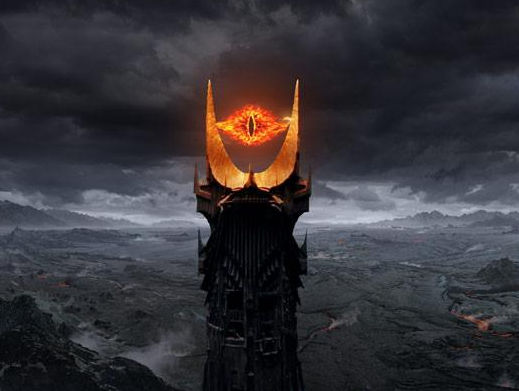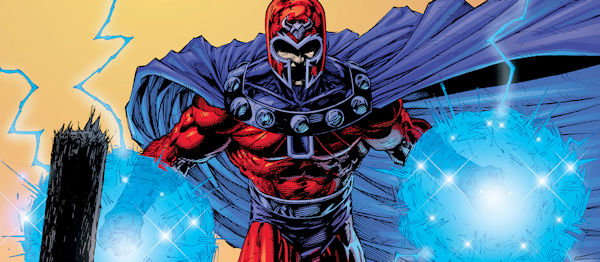Fantasy villains. Either you love them or you hate them, but good villains are memorable either way. However, writing good villains is hard! I know. I’ve written two fantasy books out through Desert Palm Press and the whole time I was writing, I kept going back to the villains. Why was the big bad, the big bad? What were their motivations, and did they make sense? I struggled with it, honestly, and I feel like every fantasy writer has similar questions. Hence, this post!
What is a villain?
A villain is the character who is working against your main character, trying to thwart that main character at every turn. The villain usually has opposing views, desires, and needs from the main character, which creates conflict in the story. A villain can be anyone—the leader of a rival magical cult, a super smart dragon trying to stop your main character from getting to their destination, or an opposing character trying to destroy that specific magical artifact. It’s your job as the writer to make them interesting and unique. Make them believable. Your readers don’t necessarily need to like the villain, but you want the readers to understand them.
But how do you make a good fantasy villain?
1. Give them a goal and establish their moral code.
Every character needs one, no matter if they’re the hero, a minor side character, or the big baddie. So, what does your villain want? In fantasy that could be as simple as wanting to obtain a priceless magic artifact before anyone else, or as broad as wanting to purge the world of what they see as the inferior race. Whatever it is, nail it down. In the same vein, establish their moral code early. What does your villain stand for? What lines will they cross? What line will they never cross?

A classic example of this is J.R.R. Tolkien’s Lord of the Rings and the main overarching villain of Sauron. He forged the One Ring “to rule them all” and he desperately wants it back so he can regain his power and he will cross every single line to get that ring back.
2. Explore that goal in their background.
Here you’re trying to find a good reason for them to become the villain they are today. The most interesting villains will have complex backstories that explain why they’re acting the way they are. You know how a main character has a wound or ghost—a defining moment that happened to them in their past—well, villains have the same thing! These defining moments are usually rooted in commonalities, something everyone can understand. Maybe they lost a loved one during a battle with a wyvern. Maybe they were corrupted by greed for power like the One Ring. Maybe they were killed and now, as an undead person, are seeking revenge. Just like the hero, a villain’s motivation is often based on something that happened to them in the past that forces them to act now. Unlike heroes, though, villains often can’t let it go and don’t necessarily learn from that moment. They let it fester and take the hurt they’re feeling out on everyone else.
One great example of how a backstory can influence the character is Magneto from the X-Men comics. He survived the Holocaust, which was a terrifying ordeal, only to have his daughter get burned to death because the community he was living in was scared of his mutant powers. Magneto was so angry he killed a lot of people and destroyed the town and had run, get a new name. His experiences during the Holocaust and the events after shaped who he became as Magneto. Because of those events, he basically just wants to keep mutants safe…but is willing to kill people to do that.
3. Explain their relationship with magic.
This is key, especially if you’ve created a really cool magic system you want to explore and show off. Normally villains have a twisted view of the magic system you’ve created—either they want more of it and will do anything to obtain it, or they want to squash people who have it for fear of an uprising. Magic is often related to power or the lack thereof, so if you explain the relationship with magic, you’ll explain their relationship with power as well. And normally villains are obsessed with power.

In V. E. Schwab’s A Darker Shade of Magic trilogy, one of the main antagonists, named Holland, has a love-hate relationship with magic. He is a powerful magician, so much so he beats the main character Kell in many fights and often holds back so he doesn’t outright murder Kell. But he’s also branded by magic, he’s a slave to it, and that push-and-pull dynamic is fascinating to read. He is powerful because of magic, and powerless because of it, too.
4. Give them a weaknesses.
It’s more fun that way, and gives the hero the chance to exploit those weaknesses. Maybe your villain’s specialty is fire-based magic so they use fire spells all the time…but not much else. Maybe your villain’s weakness is pride—they think they’re the best wizard in the land and no one can defeat them…until your hero does and forces that villain to rethink and rebound in kind. Those weakness—and your hero’s attempt at exploiting them—can also be a great motivation for your villain throughout the story. Perhaps the villain who only does fire magic, learns some water-based magic by the end.
In Critical Role’s Campaign One with Vox Machina one of the villains I really enjoyed was Raishan, the green dragon. She was clever and manipulative and sneaky. She knew how to get to Vox Machina, knew their weak points, knew how and when to attack to do the most damage. But she was also terribly sick. That was her weakness. And it was quite the motivating weakness as well!
5. Make them evolve and stack up with the heroes.
Your villain isn’t just sitting in their lair waiting for the hero to return and twiddling their thumbs. They’re actively trying to thwart the hero—whether that’s fighting them, sending minions after them, or learning new tricks to defeat them. Make sure your villains learn new abilities or gain allies just like the hero does, because your villains are people, too. They’d see your hero as a threat, and act accordingly. Allow your villains to grow, change, and learn from their mistakes.
One good example of this would be Voldemort from Harry Potter series. In the first book, Voldemort can’t touch Harry because it physically hurts him to do so. Because of that Voldemort has to figure out a way around the blood-based protection magic and eventually does. By the fourth book, he had figured out how and could touch Harry without hurting himself. He “leveled up,” as it were.
6. Make them fun, interesting, & unique.
Are they more of a magnetic person or unpredictable? Do they have a particularly terrifying presence? Your villain can’t be 100% evil, 100% of the time, so give them some good qualities and trinkets too. Maybe they’re funny or charming, clever or exceedingly loyal. Maybe they always carry one specific staff or have a scar running down their neck.
A good example of this would be in my new book Curling Vines & Crimson Trades. I have a few antagonist-villains but one of the first ones you’ll meet is named Mora—she has a very distinct look about her, all hard edges and dripping in blacks and reds. My main character Orenda notices Mora flips a unique crimson coin before she makes a decision, and every time Orenda sees that coin, she’s reminded of Mora.
See? Simple.
So go on then, make them deliciously evil, sickeningly clever, offputtingly charming. Make the hero fear them for all the right reasons, and craft them in such a way your readers cheer when the hero wins in the end. Make your villains just as unforgettable as your heroes.


